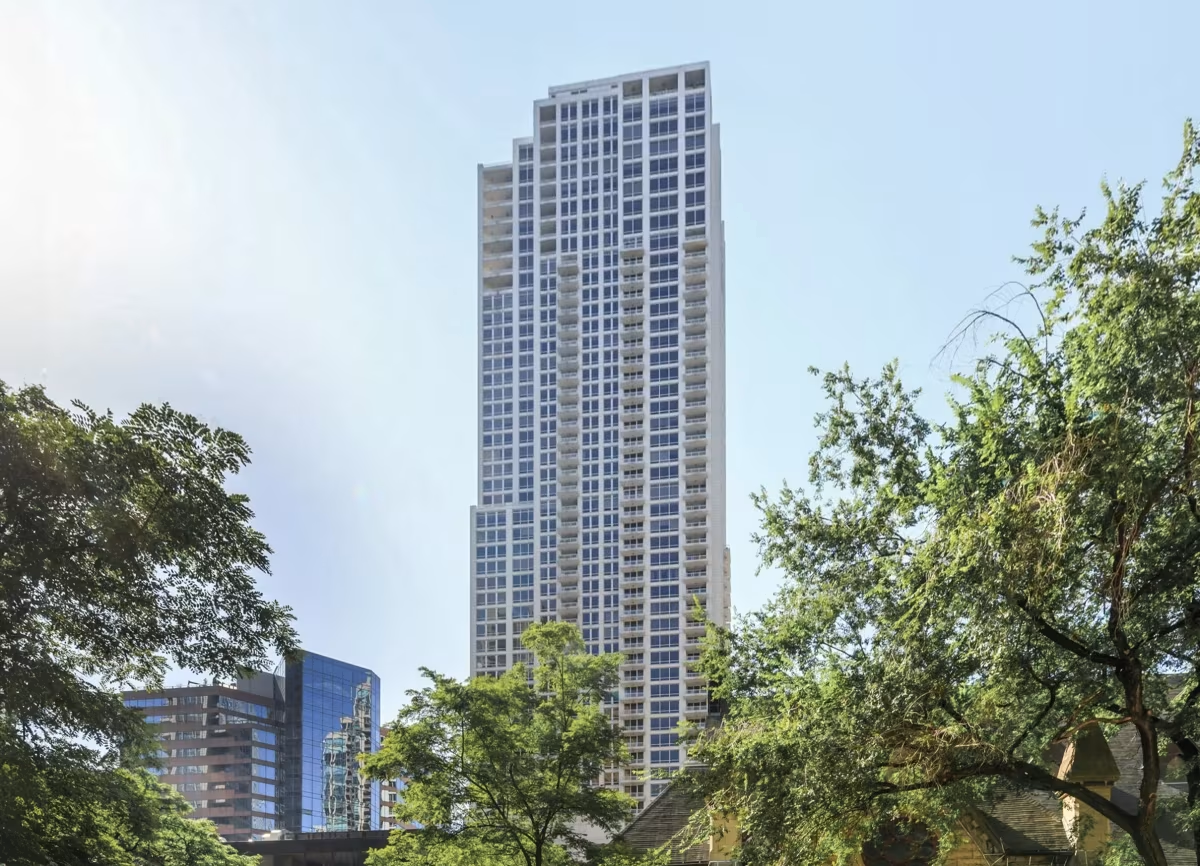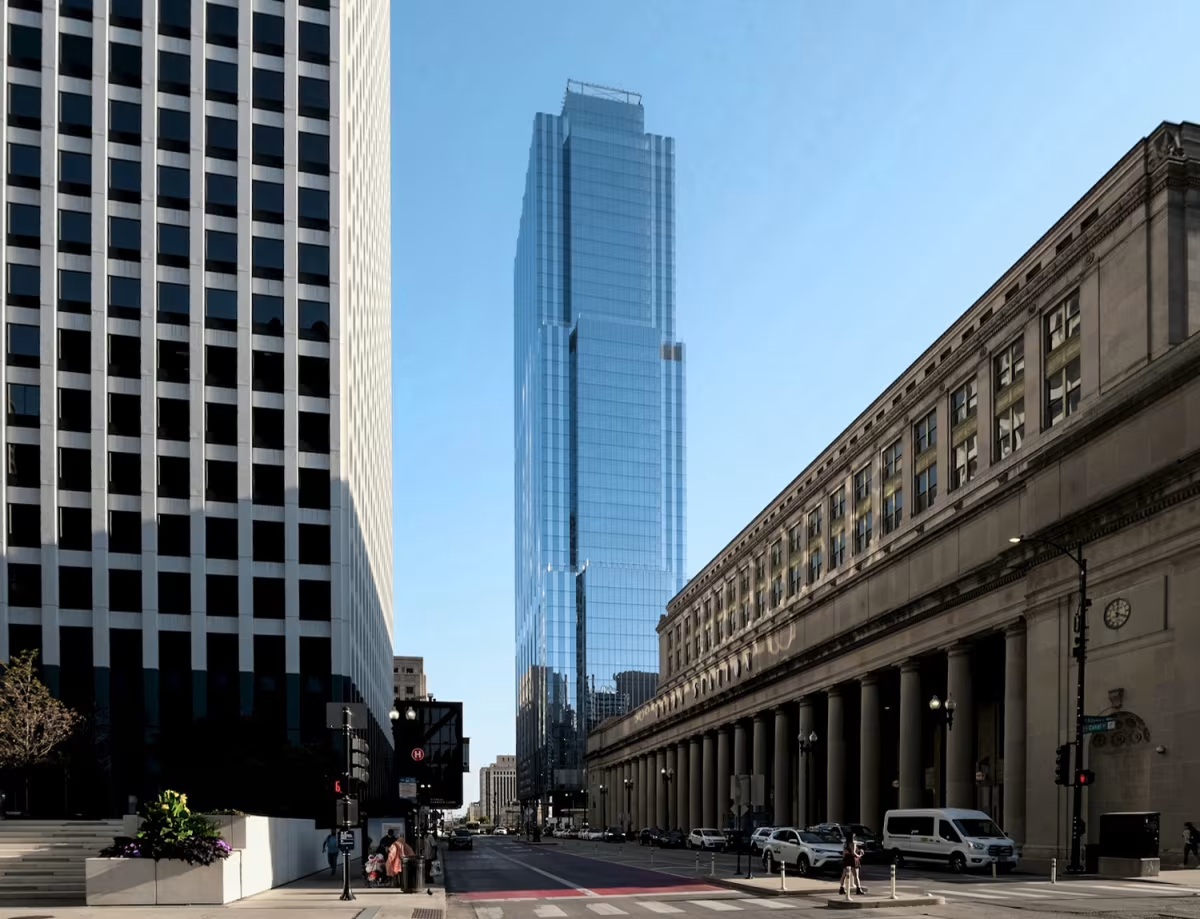55 East Erie Street Building vs BMO Tower


Comparing the 55 East Erie Street Building and the BMO Tower is interesting because they both rise in Chicago, IL, yet they were conceived by two different design teams, Fujikawa Johnson & Associates and Goettsch Partners , and were completed at different points in time. They were finished more than a decade apart.
This contrast within the same city allows us to see how different creative minds interpreted the evolving needs of Chicago across time.
Let's take a closer look!
Height & Size
These two towers present an interesting contrast in their proportions. The BMO Tower rises higher at 728ft (222m), while the 55 East Erie Street Building reaches 647ft (197.2m). However, the 55 East Erie Street Building accommodates more floors with 56 levels above ground, compared to 51 floors in the BMO Tower.
This suggests different approaches to interior space design. The BMO Tower has an average floor-to-floor height of approximately 4.4m, while the 55 East Erie Street Building has more compact floors averaging around 3.5m each. The taller building's more generous floor heights might indicate grander interior spaces, higher ceilings, or different programmatic requirements.
These different proportions likely reflect the specific needs each building was designed to serve, whether driven by zoning regulations, client requirements, or the intended use of the spaces within. The contrast shows how architects can achieve different spatial experiences even when working with similar overall building scales.
Architectural Style
Both the 55 East Erie Street Building and the BMO Tower were designed in line with the aesthetic conventions of the Contemporary style.
At the time, this style was at the height of its popularity. So both Fujikawa Johnson & Associates and Goettsch Partners followed what was in many ways expected of them, producing designs that fit comfortably within contemporary architectural norms, rather than breaking with convention.
Uses
The 55 East Erie Street Building is primarily residential, while the BMO Tower is primarily commercial.
The 55 East Erie Street Building offers 194 residential units.
Both towers provide significant parking capacity, with 55 East Erie Street Building offering 425 spaces and the BMO Tower offering 324.
Structure & Facade
Both towers share the same structural solution, a Frame system.
A frame structure uses a grid of columns and beams to carry the building's loads. This frees the walls from structural duties, allowing for flexible floor plans and larger windows.
However, when it comes to the facade, both buildings use different approaches. The 55 East Erie Street Building uses a Modular facade, while the BMO Tower uses a Curtain Wall facade.
A Modular facade like the one seen in the 55 East Erie Street Building employs prefabricated panels, often mixing solid surfaces with smaller windows, while a curtain-wall facade like the one seen in the BMO Tower uses a lightweight glass curtain wall hung from the structure.
| 55 East Erie Street Building | BMO Tower | |
|---|---|---|
| Fujikawa Johnson & Associates | Architect | Goettsch Partners |
| 2001 | Construction Started | 2019 |
| 2004 | Year Completed | 2021 |
| Contemporary | Architectural Style | Contemporary |
| Residential | Current Use | Commercial |
| 56 | Floors Above Ground | 51 |
| 197.2 m | Height (m) | 222 m |
| 71907 | Built-up Area (m²) | 161651 |
| Frame | Structure Type | Frame |
| Steel | Vertical Structure Material | Concrete And Steel |
| Concrete | Horizontal Structure Material | Poured Concrete Over Metal Decking |
| Concrete, Glass | Main Facade Material | Glass, Steel |
| Walsh Construction | Main Contractor | Clark Construction |
| Development Management Group | Developer | Riverside Investment & Development |
| Oz Sowlat | Structural Engineer | Magnusson Klemencic Associates |
| IL | State | IL |
| Chicago | City | Chicago |
| 55 East Erie | Address | 320 South Canal Street |